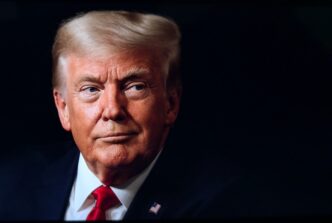President Donald Trump has announced a proposal for a major new trade deal with Japan, centered on the imposition of a broad 15% tariff on Japanese goods entering the United States. The announcement signals a potential return to the aggressive, protectionist trade policies that were a hallmark of his previous term, raising immediate questions about the future of U.S.-Japan economic relations and the potential impact on American consumers and industries.
This move, described by President Trump as a “massive” deal, aims to rebalance what he has long characterized as an unfair trade relationship. While specific details on the goods to be targeted have not yet been released, the broad nature of the announcement suggests a significant policy shift is under consideration.
Understanding the Proposed Tariffs
At its core, the proposal seeks to leverage tariffs as a tool for economic policy. Understanding how these financial instruments work is key to grasping the potential consequences of the announced deal.
What is a Tariff?
A tariff is a tax imposed by a government on imported goods or services. The goal is typically to make foreign products more expensive, thereby encouraging consumers and businesses to buy domestically produced alternatives. Proponents argue tariffs protect local jobs and industries from foreign competition, while opponents warn they can lead to higher prices for consumers and provoke retaliatory taxes from other countries.
The Scope of the 15% Proposal
A flat 15% tariff would represent a significant increase in the cost of Japanese imports. Key sectors in the U.S.-Japan trade relationship include automobiles, electronics, and industrial machinery. If these categories are included, the economic ripple effects could be substantial, impacting everything from the price of a new car to the cost of components for American manufacturing.
The Economic and Political Context
This announcement does not exist in a vacuum. It builds on President Trump’s established record on trade and targets one of America’s closest and most significant economic partners in Asia.
A Return to a Signature Policy
During his presidency, President Trump frequently used tariffs, most notably against China, in an effort to force concessions and renegotiate trade agreements. This approach, often referred to as a “trade war,” was central to his America First economic agenda. The new proposal with Japan indicates a continued belief in tariffs as a primary lever for international economic negotiation.
U.S.-Japan Trade Relations
The United States and Japan have one of the largest bilateral trade relationships in the world. Japan is a major source of vehicles and technology for the U.S. market, while American agricultural products and services are significant exports to Japan. Any disruption to this flow of goods could have far-reaching consequences for supply chains and businesses in both nations.
Potential Consequences and Reactions
The implementation of such a sweeping tariff would likely trigger a series of economic and diplomatic responses. These could range from direct impacts on consumer prices to a strategic realignment of trade partnerships.
Impact on American Consumers and Industries
For American consumers, a 15% tariff on popular Japanese goods like cars from Toyota or electronics from Sony would almost certainly translate to higher retail prices. Furthermore, U.S. manufacturers that rely on Japanese components would face increased production costs, which could either be absorbed, reducing their profits, or passed on to their customers.
Japan’s Likely Response
Facing steep new taxes on its exports, the Japanese government would be under immense pressure to respond. This could involve filing a dispute with the World Trade Organization (WTO) or, more directly, imposing retaliatory tariffs on American goods. U.S. sectors like agriculture, aerospace, and pharmaceuticals could become targets, potentially harming American exporters.
Looking Ahead
President Trump’s proposed 15% tariff on Japanese goods marks a significant potential development in international trade policy. If pursued, it would force a major renegotiation of economic terms with a key ally and could introduce new volatility for American consumers and businesses. The coming weeks will be critical as policymakers in both Washington and Tokyo analyze the proposal and formulate their respective strategies in response.








